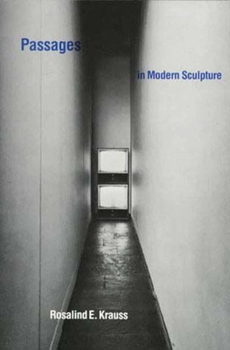Passages in Modern Sculpture
Select Format
Select Condition 
Book Overview
Studies major works by important sculptors since Rodin in the light of different approaches to general sculptural issues to reveal the logical progressions from nineteenth-century figurative works to the conceptual work of the present.
Format:Paperback
Language:English
ISBN:0262610337
ISBN13:9780262610339
Release Date:February 1981
Publisher:MIT Press
Length:320 Pages
Weight:1.21 lbs.
Dimensions:0.8" x 6.2" x 9.2"
Age Range:18 years and up
Grade Range:Postsecondary and higher
Customer Reviews
1 rating
An impressive achievement
Published by Thriftbooks.com User , 16 years ago
This is Krauss's first book, and the one I like best. Her history of modern sculpture from Rodin to Robert Smithson is grounded in a sophisticated theoretical perspective, but it's not collapsing under the weight of theory like many later Krauss's texts. Her theoretical framework in this early book is phenomenological -- she made a transition to structuralist and poststructuralist theories later in the seventies. Phenomenology -- in particular, Merleau-Pontyan phenomenology -- allows for many thought-provoking readings of modern sculpture. However, the basic assumption of the book -- viz., that there have been some parallels between the development of modern sculpture and phenomenological thought -- is flawed. There is no evidence that the artists discussed by Krauss heard of Husserl and Merleau-Ponty and their theories. Many other authors beside Krauss make a similar unjustified assumption of various "parallelisms" and "influences." Basically, this is historicism -- a belief in some sort of Zeitgeist at work in all cultural forms of a particular age. Still, the book makes for a much more rewarding read that coutless superficial, merely descriptive histories of modern sculpture, or modern art in general.






